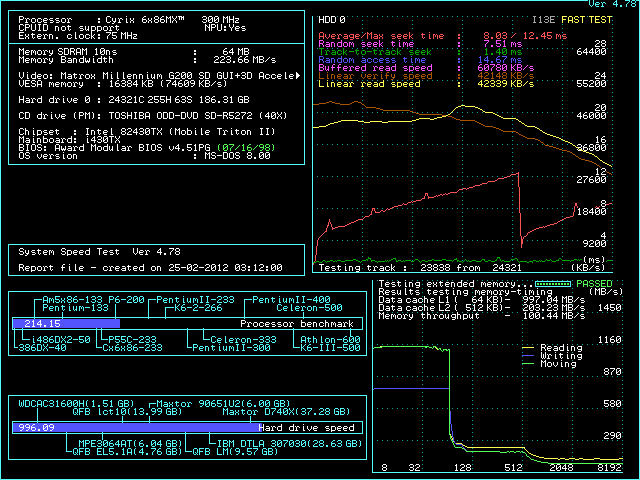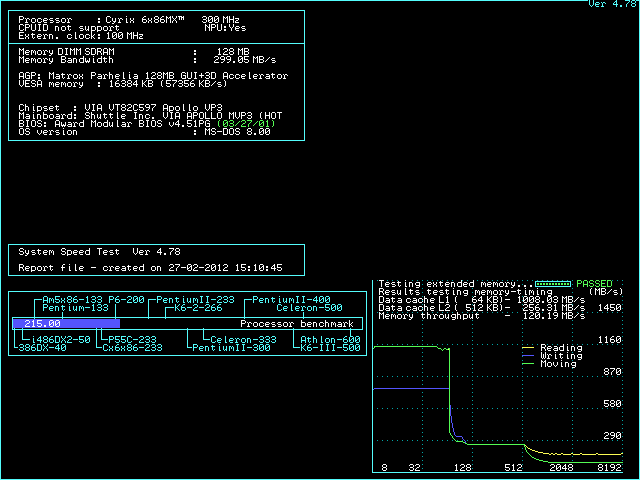The topic has gotten quite derailed. It seems nobody takes Cyrix appreciation very seriously. Perhaps the subject like should read Cyrix Fun Thread instead of Cyrix Appreciation Thread.
I'm in the process of building up a Socket 7 rig for the Ultimate 686 Benchmark Comparison. It is now built. I've decided to go with an Intel i430tx chipset motherboard. The reason being is that my Cyrix MII @ 300 MHz seems to operate fine in it. The board also has support for 72-pin SIMMs (which will make comparison with Cyrix 5x86-133 CPU more appropriate), SDRAM, and AMD K6+ CPUs. I'll only be using 64 MB of RAM so that it is all cacheable. The board also seems to work fine with an 83 MHz FSB, so I can test up to an AMD K6-III-500 CPU.
You may recall from this thread,
Re: Super Socket 7: VIA MVP3 vs. ALi Aladdin V
that the SpeedSys results for VIA/ALi boards with a Cyrix MII were a bit wonky, however everything seems fine for the i430TX chipset board. Results below. Note that the SpeedSys overall score is still a bit off. I think this may be related to having to turn off CPUID to get SpeedSys to even run. The cache/memory throughput seems agreeable though.
The system is complete inside a new ATX case (white) with a custom ATX to AT keyboard/mouse back panel, a fancy Cyrix MII silver case sticker, and an ATX to AT power supply converter. My case couldn't fit any standard single-pole single-throw (SPST) switches for the power button, so I am using the ATX standard momentary on/off power button with a custom circuit I made to translate the momentary on/off pushes into a latching on/off switch (it uses a few transistors, resistors, and a capacitor on a solder board). Photos will come later, although I must say, it is looking slick.
I have now installed Windows 98SE and the MII seems to run fine at 75x4 (300 MHz). Before I get started with the comparison, I still have 10 Cyrix register utilities to evaluate and some new benchmark programs not found in the U4BC. An i430TX won't be the last motherboard found in this system since it doesn't have AGP and can only cache up to 64 MB of RAM.
An i430TX definately won't make the world's fastest Cyrix MII list. Once the benchmark comparison is complete, I'll swap out the board for a VIA or ALi board which I determine to work well with the MII. I have a 2 MB cache VIA board and a 1 MB cache VIA board to evaluate. I also hope to source another reasonably priced ALi SS7 board at some point.
EDIT: I should probably also point out that the motherboard is an AZZA PT-5IT v2.x with a Jan modified BIOS which allows for Cyrix 4x multiplier support and AMD K6+ support. I went ahead and measured all the possible combinations for the CPU core voltage from the onboard voltage regulator as well as all possible FSB frequencies (as measured with an oscilliscope). Attached is a PDF summary of these findings.
The board supports FSB frequencies of 50, 55, 60, 66, 75, and 83 MHz.
The board supports core voltages of 1.95, 2.0, 2.1, 2.5, 2.6, 2.7, 2.8, 2.9, 3.2 Volts. I'd have liked to see more in the 2.2 - 2.4 V range.
Plan your life wisely, you'll be dead before you know it.


